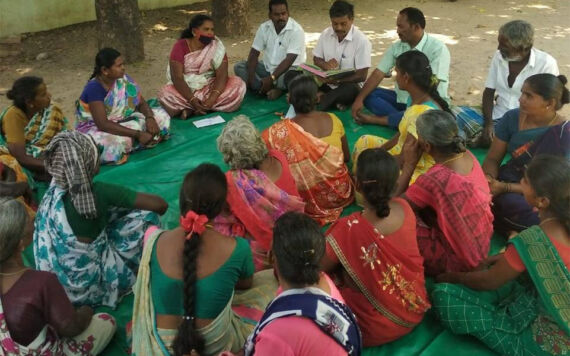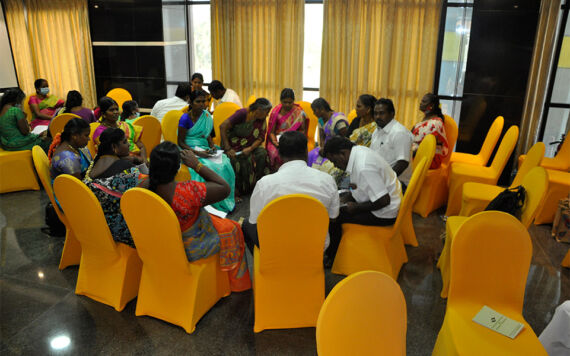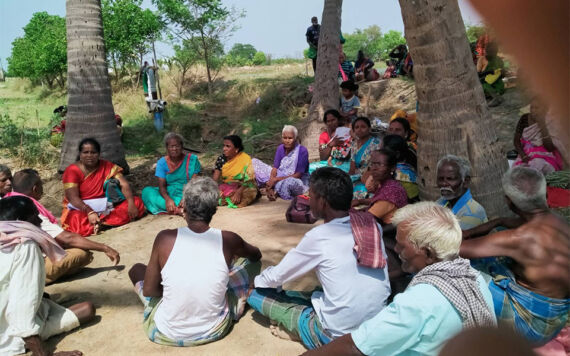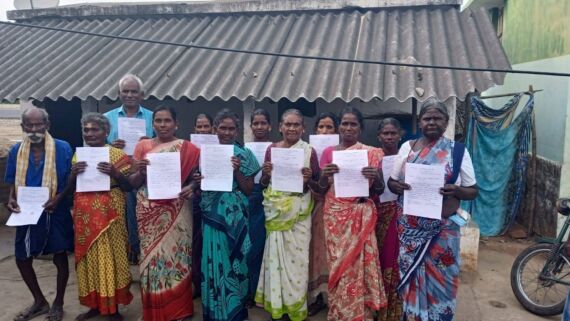| Project Name | Social Mobilsation for Resilient Livelihoods during and beyond Disasters |
| Commisioned by | German Federal Ministry for Economic Cooperation and Development (BMZ) |
| Country | India |
| Implementing Organisation | Human Rights Advocacy and Research Foundation (HRF) – www.hrf.net.in |
| Duration | November 2021 – February 2023 |
The Challenge
Lack of Social Security for Socially Excluded Vulnerable Communities: Due to historical and structural reasons, many social security schemes of the government do not reach socially excluded vulnerable communities (SEVC). Many of those communities have, for example, a high share of nomads and migrants. The basic problem is that people from SEVCs do not have proof of eligibility, or do not meet standards of eligibility (like no bank account or no titled land), hence the government system does not fulfil their entitlements.
Missing Access to Protection Measures: The COVID-19 pandemic has exacerbated these gaps. Lockdowns and protection measures severely hit life and livelihoods of SEVCs. Village presidents with close links to the community are out of the loop in disaster management protocols and cannot advocate for their community’s rights and demands. Civil society organizations are of increasing importance in trying to fill in the gap, by providing ad hoc last mile linkages for relief and community feedback.
The Objective
The project aims to promote access to emergency relief, all entitlements, and social security benefits for SEVCs in remote areas. In doing so, the communities can recover better with sustainable livelihoods and full government supported schemes and facilities.
The Target Group
The beneficiaries are from the most deprived households; women, girls, and people with disabilities are prioritised. The project reaches out to 150 villages in 30 districts, covering up to 60,000 beneficaries from 15,000 households, in coordination with the 150 village presidents. The presidents and the beneficiaries are from the scheduled castes, scheduled tribes, or from the most backward classes – the most underserved and deprived sections of Indian society.

About HRF
The Human Rights Advocacy and Research Foundation (HRF) is a non-profit, civil society institution working for the promotion and protection of human rights in India since 1993. The Foundation enables socially excluded communities and vulnerable sections of society to exercise their constitutional rights, amplifies their voice, and enhances their participation in decision-making.
Website: www.hrf.net.in
The Approach
Building Capacities of Elected Representatives: The focus of the project is building capacity of village presidents and Civil Society at the village level. Also, their awareness about entitlements of their community members in terms of social security coverage, pensions, insurance, subsidies, etc. is strengthened.
Support in Accessing Entitlements: Each district will have an animateur who works together with the village presidents. They bring the communities together for the village assemblies, inform them of the schemes, eligibility, procedures, and documentation. The animateurs provide support with filling out application forms and submit them to the respective authority at the village or sub-divisional level and follow up on the application status.
In doing so, beneficiaries get critical documentation to claim welfare schemes and pandemic relief like certificates of birth, death, marriage, community, disability, school, income/ poverty, or title deeds.
Establishing Platforms for Networking: In quarterly district meetings of the presidents with the district administration, the needs of the community members are addressed and the application processes for entitlements are followed up. Simultaneously, forums for networking village presidents with similar interests are established to strengthen their ability to access entilements and social security for the community.
Achieved Results
- 43,166 people received critical documentation such as certificates of birth, marriage, community, disability, poverty, or title deeds
- 28,085 people obtained at least one social security benefit
- 1,510 people received heath services like vaccinations
- 600 quarterly meetings of village assemblies were held to inform and support beneficiaries in application and documentation
Tamilarasi
Deputy Director
Human Rights Advocacy and Research Foundation
In the context of sustainable development, what do you consider the greatest challenge that you help to overcome in your country? What is special about your project and approach, with regard to the context in which it is located?
Reaching the government flagship schemes including social security schemes, basic entitlements (starting from identity and citizenship documents) to the left behind communities is the key issue. Though there are “flagship” programmes for their welfare, the socially excluded and vulnerable communities (SEVC) were unable to access them. The government does not have robust last mile mechanisms to reach them. By this project, we broke the barriers through systematic engagement with the government with a human rights based approach. The district animators, volunteers and the panchayat presidents were from the SEVCs, so the built capacity remains within the community and the same will be cultivated among the youngsters.
Let’s get specific: What was your most significant project success? What was especially important/notable? What are you particularly proud of having achieved?
The elected representatives of local government from SEVCs and the community are trained and familiarised to engage with the government mechanisms with real time data. This has resulted in acquiring benefits (assets and 10 year cash flow) over INR 778 million (~ Euro 8 million) in 15 months from an outlay of about INR 10 million – a return of about 1:78.
What have you learned and what experiences would you like to share with like-minded actors/practitioners?
Poverty is multidimensional, and a web. Each document in itself is quite simple, but together they made for an insurmountable barrier. It needs stamina, patience, and perseverance to untangle the web. For them to access their entitlements, and therefore increase their resilience, we need to ensure that they get the eligibility documents at their doorstep, and then assist them to apply and receive their entitlements. This is a multi-level process, and it needs community representatives and civil society organisations (CSO) to engage with the government at the local, district, and state levels on a continuous basis. The objectives should be clear and simple, but there must be flexibility in the methodology to get to the goal.






